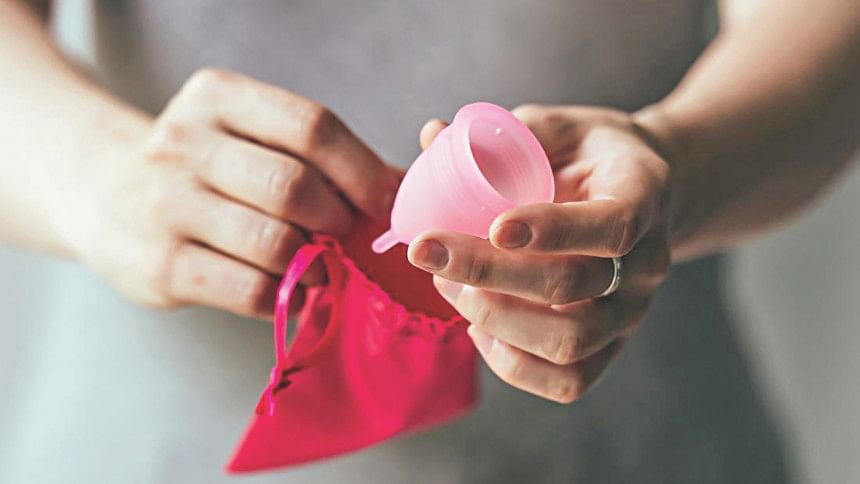An introduction to the goblet of blood

If you are a vampire, congratulations you have been clickbaited. However, if you are a female, who got yelled at by your mother for staining the bed sheet or had your favourite dress painted red, there is a magic cup that will save you and the environment.
Menstrual cups are bell-shaped silicone/latex/rubber with a stem at the bottom, which is inserted through the vagina and remains sealed against the vaginal walls below the cervix. There are multiple cup sizes to cater to women with different vaginal structure. Pads/tampons absorb blood and super-absorbent tampons cause vaginal dryness, whereas cups only collect the blood.
The menstrual cup is folded and inserted, which unfolds once inside. The cup is greased with water or any water-based fluid to reduce friction during insertion. If placed correctly, the suction allows no leakage, no restriction on physical activities and even prevents the bloody odour from wafting through, which is a common case with pads/tampons.
A menstrual cup can hold 3 times the blood absorbed by a tampon and can be worn up to 12 hours, whereas tampons/pads have to be changed after 4-6 hours depending on the flow. The cup is removed by gently pulling on the stem until the base of the cup can be felt with the index finger. The seal is broken by pinching the base and then pulled out.
The blood is rinsed out and the cup has to be washed with soap every time before re-insertion. It is of utmost importance to wash your hands thoroughly, to prevent vaginal bacterial infection. Disinfecting the cup by boiling is necessary before and after every monthly cycle.
If we do the math, the average woman uses at least 5 pads per month, 60 pads a year, and 300 pads in 5 years. The local woman spends 60-80 taka per month, amounting to 3,600 - 4,800 taka in 5 years, depending on the brand of pad used.
In this era of eco-consciousness, we cannot ignore that disposable hygiene products cause excessive landfill waste. Not only are menstrual cups eco-friendly, but they are also cheaper in the long run. A branded menstrual cup is worth $25-$40, roughly 2,000 – 3,200 taka, which is a hefty amount but can be used for 1-5 years and even last up to 10 years if maintained properly.
Popular brands include DivaCup, OrganiCup, Lunette, and FlexiCup. OrganiCup has detailed videos on YouTube worth checking. Non-branded cups are also available but aren't recommended since they could be made from cheap materials.
The most important step here is accepting your bodily fluids and being okay with blood. The first few tries might be tricky but once comfortable, there is no going back. Menstrual cups have revolutionized the period experience for those who have given it a shot. New decade, new you, new product worth exploring to make life easier.

 For all latest news, follow The Daily Star's Google News channel.
For all latest news, follow The Daily Star's Google News channel. 



Comments